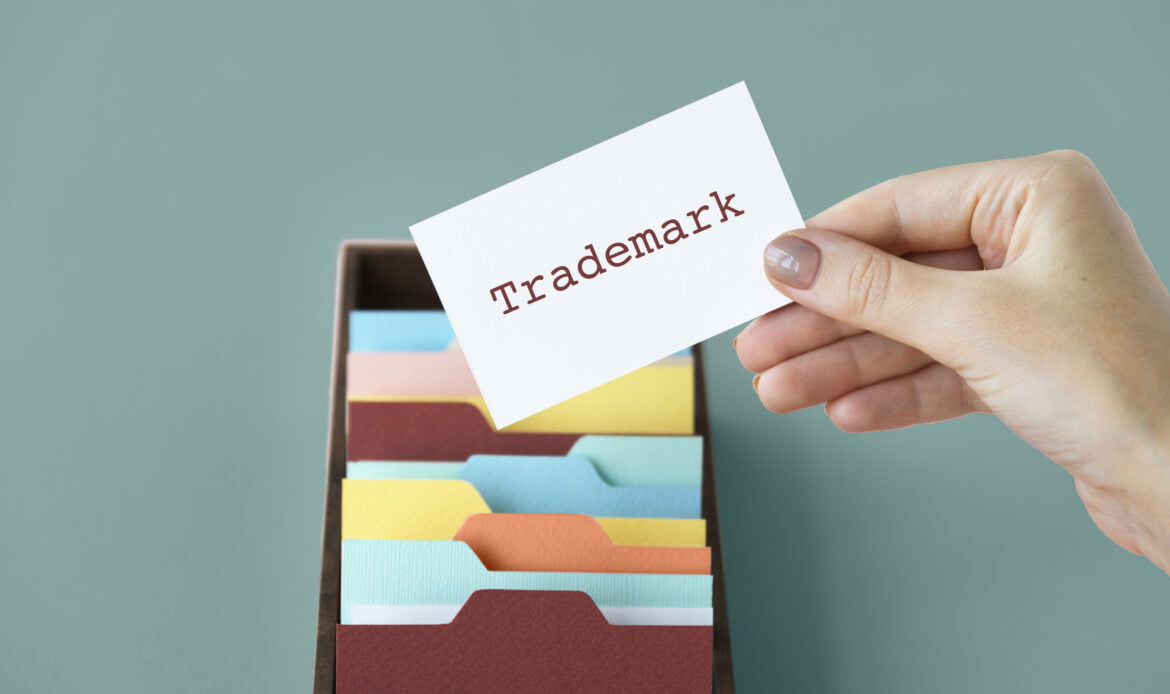HOW TO REGISTER A TRADEMARK IN THE USA
- WHAT IS TRADEMARK?
A trademark serves as a means for individuals and businesses to distinguish their goods and services from others in the market. It can take the form of a brand name, logo, phrase, or word, and is a valuable asset that needs legal protection through intellectual property rights. In the United States, the registration and administration of trademarks are overseen by the US Patent and Trademark Office (USPTO).
While federal registration through the USPTO is the primary avenue for trademark protection, individual states also offer their own trademark registration systems. State-level registrations typically provide limited protection within a specific geographical area. On the other hand, federal registration provides comprehensive protection across the entire United States, offering broader recognition and legal benefits.

2. WHO CAN APPLY FOR A TRADEMARK?
In the United States, any individual or entity that meets the eligibility requirements can register a trademark. The bellow mentioned parties are eligible to apply for a trademark in the USA:
- Individuals: Any person who uses a mark in connection with their goods or services can register a trademark. This includes individuals who operate businesses as sole proprietors or entrepreneurs.
- Corporations and Companies: Business entities, such as corporations, limited liability companies (LLCs), partnerships, and other legally recognized organizations can register a trademark to protect their brands.
- Foreign Entities: Foreign individuals or entities that use or intend to use a trademark in commerce within the United States can also register a trademark. It’s worth noting that foreign applicants are required to have a U.S.-licensed attorney represent them in most cases.
- Non-Profit Organizations: Non-profit organizations that use or plan to use a trademark in connection with their goods or services are eligible to apply for trademark registration.
- Government Entities: Government agencies or departments can also apply for trademark registration if they use a mark to distinguish their goods or services.
3. WHAT CAN BE TRADEMARKED?
In the United States, a wide range of elements can be trademarked to protect a brand’s identity and distinguish its goods or services from others. The following are examples of what can be trademarked:
- Brand Names: A brand name, such as Nike or Coca-Cola, can be trademarked to provide exclusive rights to use that name in connection with specific goods or services.
2. Logos and Symbols: Unique logos, symbols, or graphic designs that represent a brand or its products can be trademarked. For example, the Apple logo or the Nike “swoosh” symbol.
- Slogans and Taglines: Catchy slogans, memorable phrases, or taglines associated with a brand can be trademarked. Such as “A to Z” for Amazon or “Das Auto” for Volkswagen.
- Product Packaging: Distinctive product packaging, such as the shape of a Coca-Cola bottle or the design of a Pringles can be trademarked to protect the unique visual elements that consumers associate with a particular brand.
- Product Names: Names given to specific products or services can be trademarked. For instance, the name “iPad” is a registered trademark for Apple’s tablet device.
- Sounds: Unique sounds or rings that are used to identify a brand, such as the Intel “bong” sound or the NBC chimes, can be trademarked.
- Colors: In certain circumstances, specific colors can be trademarked when they are closely associated with a brand and have acquired distinctiveness, such as the Tiffany blue color.
- Fragrances: Rare or distinctive scents used in connection with products such as perfumes or air fresheners can possibly be trademarked.
Additionally, the element should not be commonly used to describe the goods or services or directly describe a characteristic or quality of the goods or services. Generic and descriptive elements typically do not qualify for trademark protection.

4. WHAT IS THE PROCEDURE FOR APPLYING FOR TRADEMARKS IN THE USA?
The procedure for register a trademark in the United States includes some steps. Below mentioned is an overview of the registration process:
- Before filing an application, it is advisable to conduct a thorough trademark search to ensure that your desired mark is available and does not conflict with existing trademarks. This search can be performed independently using the USPTO’s trademark database or with the assistance of professional search firms.
- Determine whether you will be filing based on the actual use of the mark in commerce or on the intent to use the mark in the future. This will depend on your specific circumstances and whether the mark is already in use at the time of filing.
- Complete the Trademark Electronic Application System (TEAS) form, providing accurate information about the applicant, the mark itself and the goods or services associated with the mark.
- File the trademark application electronically through the USPTO’s Trademark Electronic Application System (TEAS) and pay the required filing fee. The fee amount will depend on the filing basis and the number of classes of goods or services included in the application.
- Once the application is submitted, it will be assigned to a trademark examiner at the USPTO. The examiner will review the application for compliance with legal requirements and assess potential conflicts with existing marks. If any issues or objections arise, they will be communicated through an Office Action.
- If you receive an Office Action, you must respond within the specified timeframe, typically within six months, addressing any objections or issues raised by the examiner. If you do not respond then it may result in rejection of the application.
- If the application is approved by the examiner, it will be published in the USPTO’s Official Gazette for a specified period, typically 30 days. During this time, third parties can oppose the registration if they believe it infringes on their existing rights. If no opposition is filed, the application proceeds to the next step.
- If there are no successful oppositions, or if the application was based on intent to use and the mark has been used in commerce, the USPTO will issue a Notice of Allowance. You will need to submit evidence of actual use of the mark or file a request for an extension of time to file the evidence.
- If your mark is based on intent to use, you must file a Statement of Use along with evidence of actual use in commerce within six months of the Notice of Allowance. Alternatively, you can file a request for an extension of time to file the Statement of Use, allowing for an additional six-month extension period.
- Once the USPTO accepts the Statement of Use or extension request, your mark will be registered and a registration certificate will be issued.
5. WHAT DOCUMENTS ARE REQUIRED FOR REGISTER A TRADEMARK IN THE USA?
When registering a trademark in the United States, one needs to gather specific documents and information to include in your trademark application. Here are the primary documents required for registering a trademark in the USA:
- Trademark Application Form
- Applicants Identity proof and address proof copies
- Business or company certificate copy
- Proposed trademarks print and digital version
- Applicant’s passport copy
- Specimen of Use
- Drawing of the Mark
- Description of Goods or Services
- Basis for Filing
- Power of Attorney (if applicable)
- Filing Fee
6. WHAT ARE THE BENEFITS OF REGISTERING TRADEMARK IN USA?
Here are some benefits of trademark registration in the USA:
1. Exclusive Rights and Protection: Registering a trademark grants you exclusive rights to use the mark in connection with the goods or services covered by the registration. It provides legal protection against others using a similar mark that may cause confusion among consumers. It also helps prevent unauthorized use and counterfeiting of your brand.
- Nationwide Protection: Trademark registration at the federal level through the United States Patent and Trademark Office (USPTO) provides nationwide protection throughout the United States. This means that you can enforce your trademark rights across all states, regardless of your actual business presence in specific locations.
3. Presumption of Ownership and Validity: Registering a trademark creates a legal presumption of your ownership and the validity of the mark. It simplifies the process of proving your ownership in case of disputes or infringement actions, as you have a public record of your rights.
- Use of ® Symbol: After obtaining a federal trademark registration, you can use the ® symbol with your mark. This symbol notifies others that your mark is registered and provides a deterrent against potential infringers.
- Legal Remedies and Enforcement: Trademark registration strengthens your ability to enforce your rights and pursue legal remedies against infringers. It provides a solid basis for filing infringement lawsuits, seeking damages, and obtaining injunctions to stop others from using your mark without permission.
6. Enhanced Brand Recognition and Reputation: A registered trademark can contribute to the overall recognition and reputation of your brand. It distinguishes your goods or services from competitors and helps build consumer trust and loyalty. It allows consumers to associate your mark with a particular level of quality and consistency.
- Trademark Licensing and Monetization: Registering a trademark enables you to license or transfer your rights to others. This provides opportunities for brand expansion, collaboration with partners, and generating additional revenue streams through licensing agreements or franchising arrangements.
- Access to Customs Protection: A registered trademark allows you to record your mark with the US Customs and Border Protection (CBP). This helps prevent the importation of counterfeit goods that bear your registered mark, protecting your brand’s integrity and consumer trust.
- Valuable Asset: A registered trademark becomes a valuable intangible asset for your business. It can increase the overall value of your company, enhance your market position, and attract potential investors or buyers.
By this way you can register a trademark in USA
Jibran Farooqui is a seasoned professional with a passion for driving business growth and expansion. As a Business Expansion Expert at Juris Consultants, he brings a wealth of experience and a strategic mindset to help businesses navigate the complexities of growth in an ever-evolving market. With a background in business development and a deep understanding of the legal and regulatory landscape, Jibran is well-equipped to guide clients through the intricacies of expanding their operations. He specializes in developing market entry strategies, forging international partnerships, and optimizing business processes to maximize profitability.





